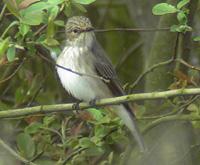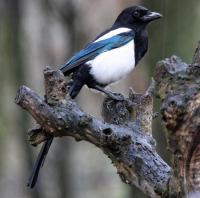- Home
- FAQs
- Customer Video Gallery
- Customer Photo Gallery
- Bird Facts
- Bird Food Blog
- Bird Information
- Feeding Advice
- Small Animal Information
- A to Z of Guinea Pigs
- A to Z of Hamsters
- A to Z of Rabbits
- Basic Care for Guinea Pigs
- Basic Care for Hamsters
- Basic Care for Rabbits
- Basic care for Chinchillas
- Basic care for Ferrets
- Basic care for Gerbils
- Basic care for Mice
- Basic care for Rats
- Buying a Healthy Small Animal
- Does your Reptile need a Licence
- Equipment for Ferrets
- Equipment for Hamsters
- Equipment for Mice
- Equipment for your Chinchilla
- Equipment for your Gerbil
- Equipment for your Guinea Pig
- Equipment for your Rabbit
- Keeping a House Rabbit
- Dog Information
- Cat Information
- Customer Information
- Fat Balls
- Suet Pellets
- Straights
- Seed Mixes
- Suet Treats
- Mealworms
- Bird Feeders
- My Account

| Scientific Name | Muscicapa striata |
| Breeding | May |
| Fledge Days | 12-14 |
| Incubation Days | 11-15 |
| Lifespan | 2 years |
| Number of Clutches | 1-2 |
| Number of Eggs | 4-5 |
| Size | 13 - 15cm |
| Weight | 14 - 20g |
| Wingspan | 24cm |
Bird Family : Flycatchers
Spotted Flycatcher Facts - Information About Spotted Flycatcher
Spotted Flycatcher - Muscicapa Striata
The Spotted Flycatcher is a summer migrant to the UK. As the name suggests, it feeds on flies that are caught by making a quick dash from an obvious perch. There are around 70, 000 pairs in the UK each summer. The Spotted Flycatcher is a small but chunky bird, similar in size to the Robin. It spends its winter in Africa.
Identification:
Adult
- Adult males and females are alike.
- Spotted Flycatchers are small and chunky, 14 cm in length and are predominantly grey brown all over.
- They have no real distinguishing marks, but when seen well they are quite unmistakable.
- They are small birds and often appear ‘bull headed’.
- The upperparts and tail are mid-grey brown, rump and tail are plain, back is grey brown with all wing feathers with the exception of the primaries neatly edged in white.
- The head often appears peaked and is grey/brown with streaking to the forehead.
- The throat is pale and breast is pale with diffuse grey streaking.
- Belly and undertail coverts are white.
- Legs, bill and eye black.
Juvenile
- Juveniles appear from June onwards as they are a late migrant; they are a similar to adults.
- Young birds appear to be more buffy toned, wing feathers are edged buff in stead of white.
- The back is heavily spotted buff rather than plain as in adults.
- Head is also buffy streaked.
- The plain tail still shows some buff spotting on the upper tail coverts.
- Belly and undertail is white.
- Bill, legs and eye black.
Status and Distribution
The Spotted Flycatcher is a common breeding summer migrant, it arrives in May and departs September. In the UK we have around 70,000 pairs. The Spotted Flycatcher occurs in all counties throughout the UK.
Habitat/Food
Spotted Flycatchers occur in many habitat types throughout the UK as long as there are deciduous trees, they prefer open areas in which to catch flies.
Woodlands, parks, gardens, farmland, hedgerows, indeed any open country habitat with trees can be attractive to flycatchers.
Song/Call
Several call notes; all notes are quiet and soft…..main call is a single ‘chit’ repeated many times.
Song is a soft series of scratchy and squeaky notes with no real melody.







